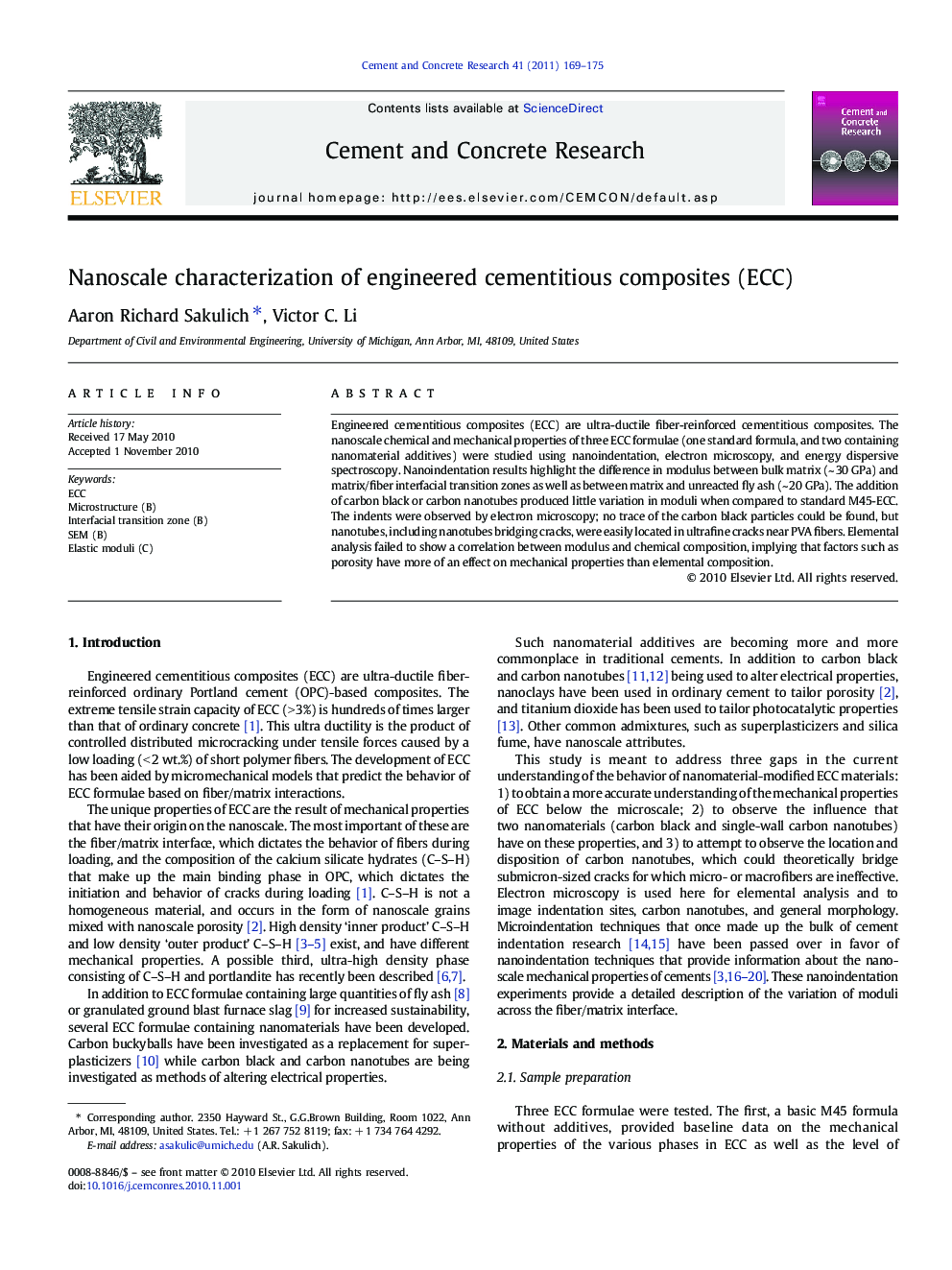| Article ID | Journal | Published Year | Pages | File Type |
|---|---|---|---|---|
| 1456722 | Cement and Concrete Research | 2011 | 7 Pages |
Engineered cementitious composites (ECC) are ultra-ductile fiber-reinforced cementitious composites. The nanoscale chemical and mechanical properties of three ECC formulae (one standard formula, and two containing nanomaterial additives) were studied using nanoindentation, electron microscopy, and energy dispersive spectroscopy. Nanoindentation results highlight the difference in modulus between bulk matrix (~ 30 GPa) and matrix/fiber interfacial transition zones as well as between matrix and unreacted fly ash (~ 20 GPa). The addition of carbon black or carbon nanotubes produced little variation in moduli when compared to standard M45-ECC. The indents were observed by electron microscopy; no trace of the carbon black particles could be found, but nanotubes, including nanotubes bridging cracks, were easily located in ultrafine cracks near PVA fibers. Elemental analysis failed to show a correlation between modulus and chemical composition, implying that factors such as porosity have more of an effect on mechanical properties than elemental composition.
